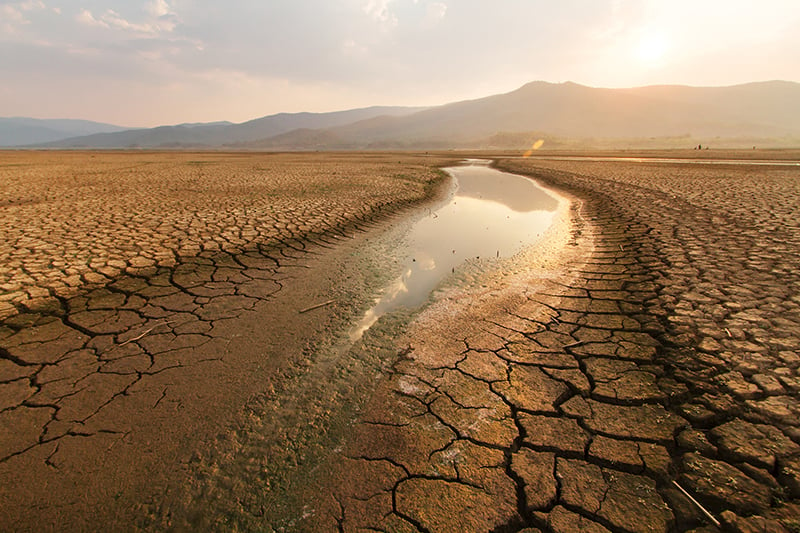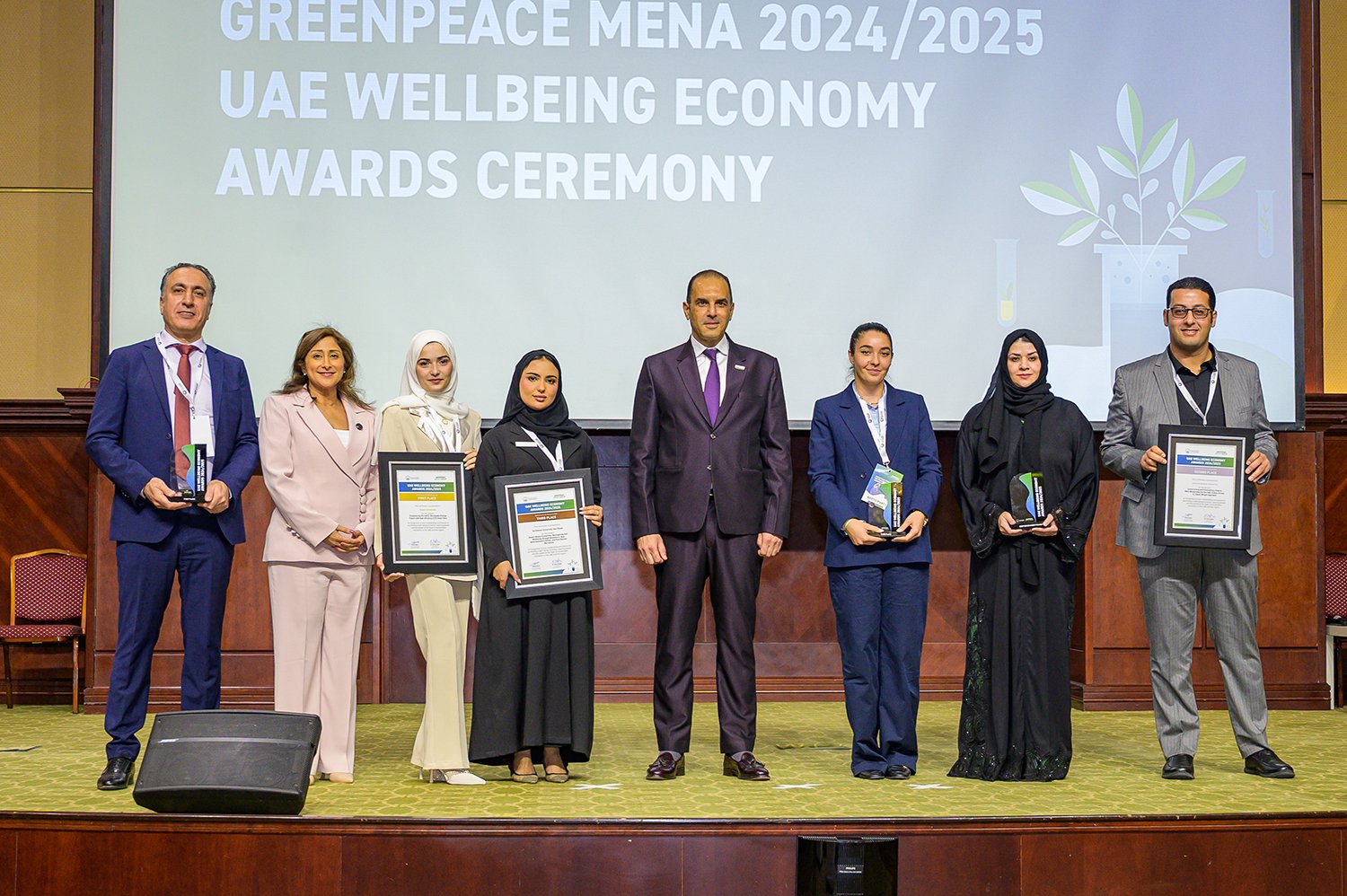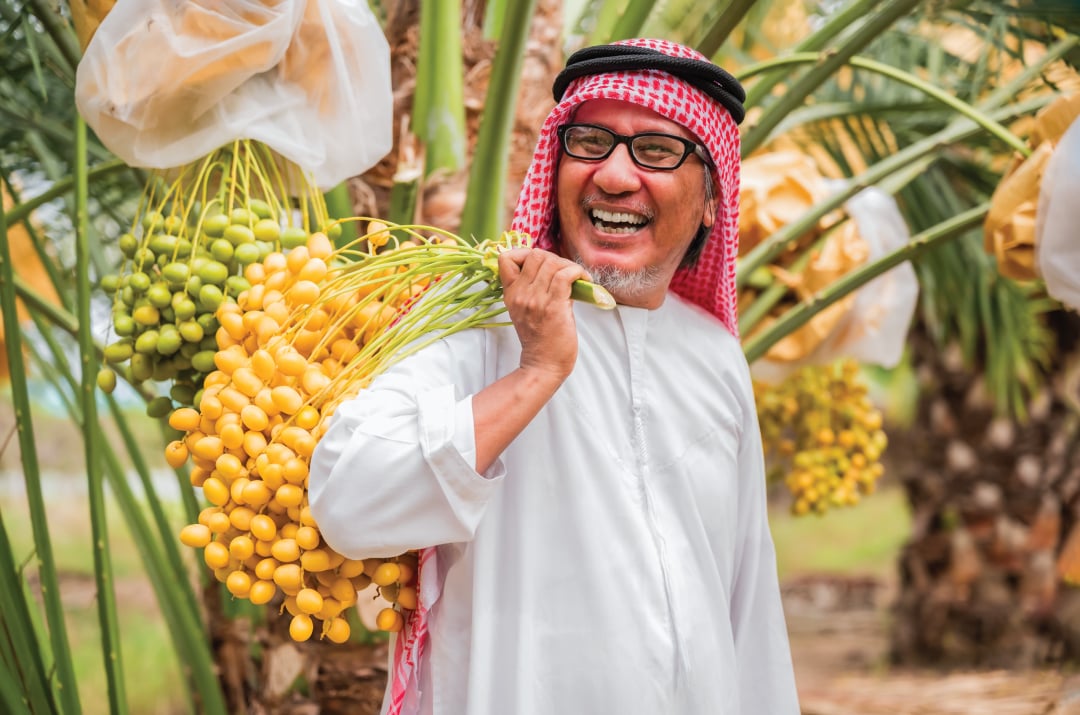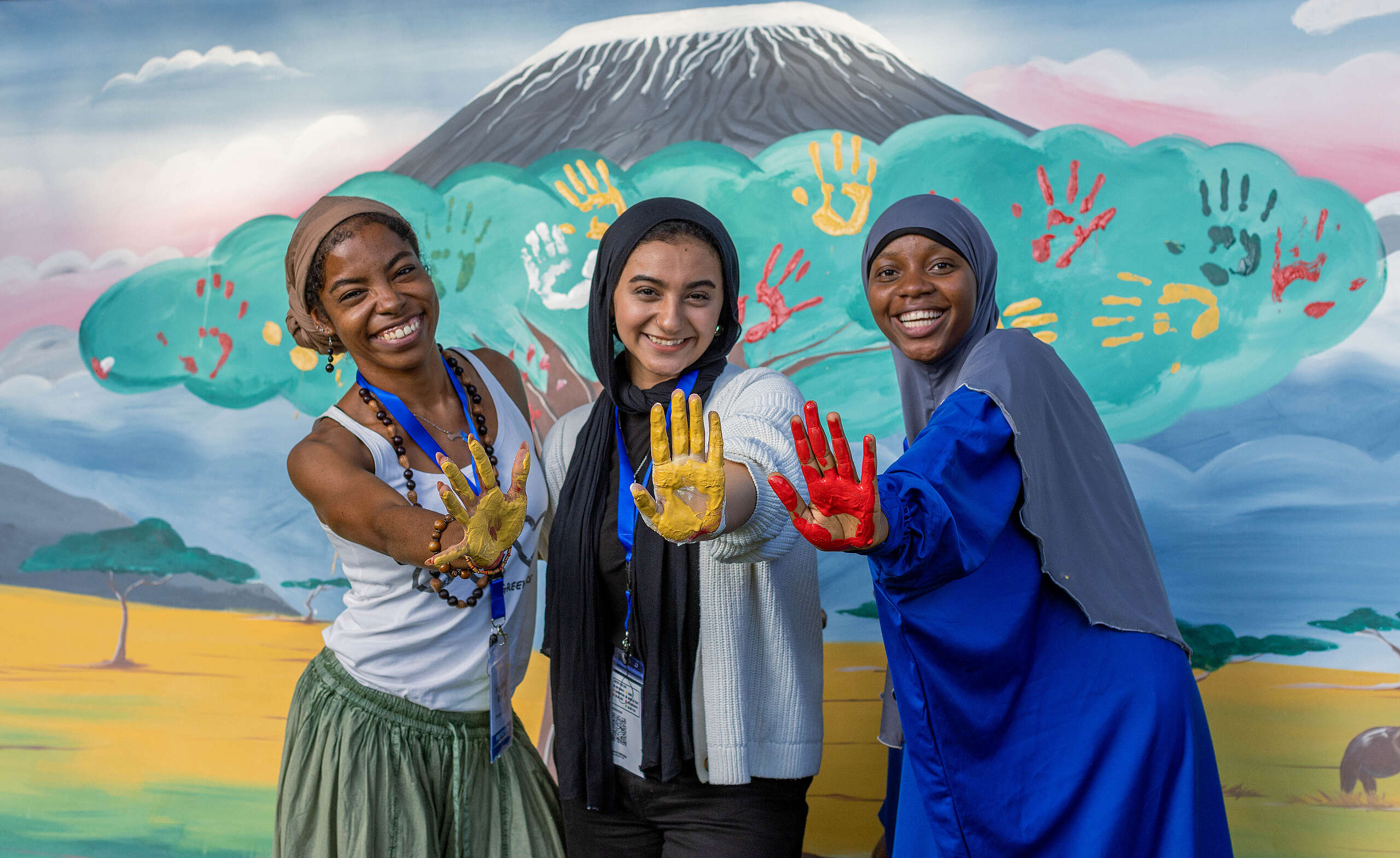Climate change has never been just a distant environmental crisis; it is a reality that threatens both our present and our future, particularly in the Middle East and North Africa, which lies at the heart of the storm. Here, the losses go far beyond the economy and are not merely measured in numbers. They are reflected in lives lost, livelihoods destroyed, and homes wiped out, as this region—once a symbol of life—turns into a battleground against drought, floods, wildfires, and rising temperatures. |
Picture a farmer watching helplessly as once-fertile land turns barren. Imagine Bedouin communities witnessing the disappearance of vital oases that once thrived with life. Envision families grappling with water shortages, extreme heat, and the collapse of their livelihoods. These are not just statistics added to reports, but people deeply connected to their land and culture, caught in a desperate struggle for survival: either they are forced to leave their land or confront the looming specter of poverty and marginalization.
From the heart of our region, one of the hardest hit by climate change, the voices of climate crisis victims rise like an alarm bell, spotlighting the relentless struggles of communities standing on the frontlines of this crisis.
Ahwari Women: Among the Most Affected by Climate Change
In southern Iraq’s marshlands, where water, trees, and buffalo once formed the backbone of life, women now endure the harshest consequences of climate change. These marshes, designated as a nature reserve, have suffered due to dwindling flows from the Tigris and Euphrates rivers, which supply Iraq with 98% of its surface water. This has led to soil salinization, the destruction of traditional habitats for fish and livestock, and widespread land degradation.
Ahwari women, who were the pillars of their communities through agriculture, fishing, and livestock farming, have been deeply impacted by this situation. As water levels droped, the production of “Qeimer Arabi” or “Iraqi Geymar” – a clotted cream renowned for its authentic flavor and purity, made from buffalo milk found in the marshes of southern Iraq – also decreased. This vital source of income has dwindled, prompting many families to migrate and abandon a heritage that stretches back thousands of years. Today, the data reveals a loss of between 20% and 33% of buffalo herds, with milk production dropping from 6 liters per day to less than one liter. Furthermore, over 70% of the marshlands are dry, and 95% of the fish stock has been lost, placing additional burdens on women who are the primary breadwinners for their families.
Iraq, ranked among the countries most affected by climate change, faces the grim prospect of its marshes turning into deserts, taking with them essential biodiversity and the buffalo that symbolize the region’s heritage. Mass migration, economic collapse, and environmental degradation are already taking their toll. Areas like Umm al-Nijjag and the Western Hammar Marsh are transforming into desolate wastelands, putting the future of the marshlands and the communities that once protected them at serious risk.
Moroccan Oases: A Cultural Heritage on the Brink of Vanishing
In Morocco, one of the most water-scarce countries in the world, residents are enduring the worst drought in decades. Oases, which cover 15% of the country’s land, are a crucial lifeline in the heart of the desert. Rich in palm trees and unique ecosystems, they represent a rich cultural heritage and form the backbone of agriculture and livestock farming, which have sustained the stability of local communities for generations.
However, relentless desertification and the encroachment of sand have devastated these ecosystems. Over the past century, Morocco has lost two-thirds of its palm trees, leading to the disappearance of critical habitats and disrupting agriculture and food security. Many residents have been forced to migrate. The Skoura oasis, which dates back to the 12th century and was once renowned for its almonds, apples, olives, and dates, is now among the growing list of parched oases. Climate change and water scarcity have wreaked havoc on the oasis and its people, with the roots of 14 million date palms drying out, causing one-third of them to perish. If these changes continue, this invaluable natural and cultural heritage may disappear entirely.
Tunisia: The Cry of Rural Communities in the Face of Climate Change
In the heart of Tunisia, regions such as Al-‘Ala and Qal’at al-Andalus reveal the harsh impact of climate change on the most vulnerable groups. According to a study by the Tunisian Forum for Economic and Social Rights, climate change has evolved from an environmental phenomenon to a humanitarian crisis that has struck the deepest parts of society. The poorest classes, already suffering from economic and social pressures, find themselves facing amplified impacts, with women bearing the heaviest burden.
Al-‘Ala, which once relied on olive and citrus cultivation, has seen its residents’ dreams of successful harvests thwarted by soaring temperatures and ongoing drought. Crop yields have fallen, income has diminished, and daily life has become harder than ever. Women, who are the backbone of rural life, are now forced to travel long distances to fetch water, further increasing their daily burdens.
This crisis extends beyond the erosion of resources to fracture social fabric. Unemployment has risen, family bonds have weakened, and migration from rural areas has become a harsh reality. The experiences of Al-‘Ala and Qal’at al-Andalus serve as vivid examples within a broader landscape. These villages are not just dots on a map but human stories filled with both pain and hope. They represent the direct impact of climate change on Tunisia’s local communities, especially those dependent on natural resources for their livelihoods.
Yemen: Climate Change Complements the Toll of War
In Yemen, survival has become even more complex, as the effects of climate change are intertwined with the horrors of war, creating a reality that threatens even the most basic components of life. Floods drown camps for displaced people, and desertification swallows up farmland, compounding the suffering from a war that has lasted for years. The conflict has depleted resources and weakened the state, with 80% of the population struggling to access basic services, while climate change exacerbates water scarcity and food insecurity, threatening the lives of millions.
In the village of “Al-Makhbiyyah” in Hadhramaut, once hidden behind a lush palm forest, the land has been swallowed by desert, forcing families to flee. The story of Al-Makhbiyyah is repeating itself in other regions. In Aden, the existential threat looms with rising sea levels and storms polluting surface and groundwater, leading to a surge in infectious diseases and worsening food insecurity. According to a study by the Yemeni Family Care Association, Yemen loses between 3% and 5% of its agricultural land annually due to desertification, with cultivated areas dropping from 1.6 million hectares in 2010 to 1.2 million in 2020. Today, more than 19 million people suffer from food insecurity, with 161,000 on the brink of famine.
Desertification has increased from 90% to 97% in less than a decade, while sea levels in Yemen are projected to rise by 0.54 meters by 2100, threatening to contaminate freshwater sources with saline water and worsening water scarcity. Even the fishing sector has not been spared, as fish stocks have decreased by up to 23% due to changes in marine ecosystems and rising sea temperatures.
Amid these intertwined crises, the survival of Yemenis has become a daily battle, with statistics reflecting a community enduring an unending war, coupled with an environmental and climate catastrophe that knows no bounds.
The Nile Delta: A Looming Threat to Land and Agriculture
The Nile Delta, covering an area of 240,000 square kilometers and home to major cities with dense populations, is one of the most threatened regions globally. Recent estimates indicate that rising sea levels threaten agricultural production, which forms the backbone of Egypt’s economy. Saltwater intrusion is expected to affect large areas of the delta, jeopardizing farmland and reducing future agricultural output. Rising sea levels are expected to cause the loss of 50% of the coastal lands in the Nile Delta by 2100, leading to massive displacement.
The World Bank’s 2022 report warns that rising temperatures and heatwaves accelerate evaporation and increase soil drought, further weakening the land’s ability to support crops. As these changes continue, Egypt faces an existential threat with the deterioration of coastal areas and the submerging of the delta, potentially leading to the displacement of millions and the loss of vast agricultural lands. In this context, the Nile Delta is considered by the Intergovernmental Panel on Climate Change as one of the “three major hotspots” most vulnerable to climate change worldwide.
Water scarcity exacerbates the crisis; by 2025, water supplies may drop to less than 500 cubic meters per person—a level classified as “absolute scarcity.” This reality intensifies the impacts of climate change, with rising water evaporation rates and worsening climatic disruptions such as floods and prolonged droughts. Egypt’s coastal strip, stretching from Salloum to Alexandria, also suffers from unregulated urban expansion, which amplifies climate change consequences such as coastal erosion, rising temperatures, and increasing sandstorms.
What does this tell us?
The heartbreaking stories emerging from Middle Eastern and North African communities grappling with climate change carry a clear lesson: addressing climate change is not a luxury but a necessity to ensure a secure and just future. Every day wasted without concrete action further burdens these frontline communities, as though imposing a harsh sentence of hard labor—or even death. Ending this suffering lies at the heart of climate justice, which is now an urgent and critical necessity more than ever before.

Since climate change is one of the most serious threats facing the Middle East and North Africa, and as part of our awareness project to combat and adapt to its impacts, we want to hear from you, and from citizens across the region who are witnessing the changes around them caused by global warming.
Join Us


